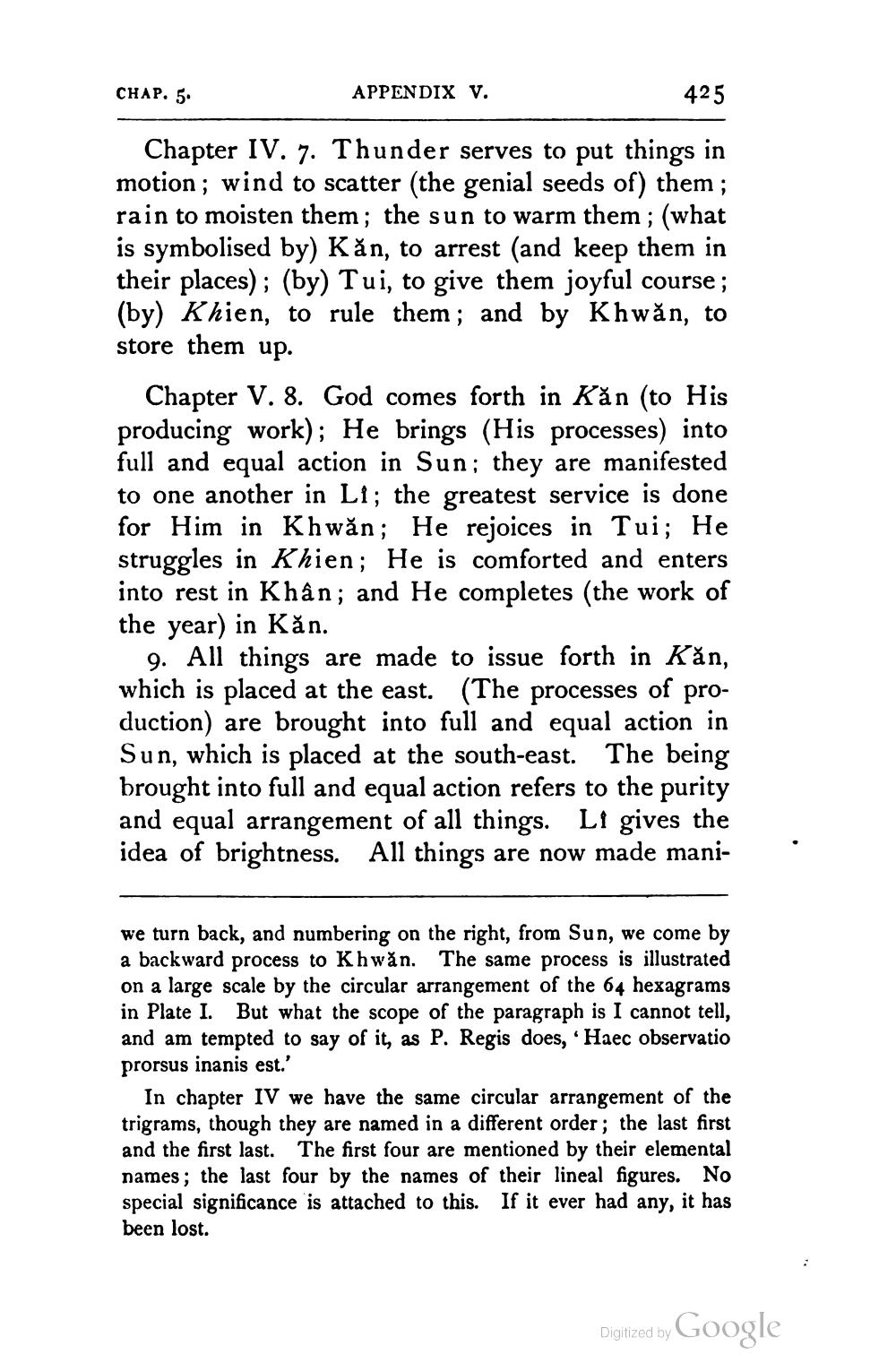________________
CHAP. 5.
APPENDIX V.
425
Chapter IV. 7. Thunder serves to put things in motion; wind to scatter (the genial seeds of) them; rain to moisten them; the sun to warm them; (what is symbolised by) Kăn, to arrest (and keep them in their places); (by) Tui, to give them joyful course; (by) Khien, to rule them; and by Khwăn, to store them up.
Chapter V. 8. God comes forth in Kån (to His producing work); He brings (His processes) into full and equal action in Sun; they are manifested to one another in Li; the greatest service is done for Him in Khwăn; He rejoices in Tui; He struggles in Khien; He is comforted and enters into rest in Khân; and He completes (the work of the year) in Kån.
9. All things are made to issue forth in Kån, which is placed at the east. (The processes of production) are brought into full and equal action in Sun, which is placed at the south-east. The being brought into full and equal action refers to the purity and equal arrangement of all things. Li gives the idea of brightness. All things are now made mani
we turn back, and numbering on the right, from Sun, we come by a backward process to Khwăn. The same process is illustrated on a large scale by the circular arrangement of the 64 hexagrams in Plate I. But what the scope of the paragraph is I cannot tell, and am tempted to say of it, as P. Regis does, . Haec observatio prorsus inanis est.'
In chapter IV we have the same circular arrangement of the trigrams, though they are named in a different order; the last first and the first last. The first four are mentioned by their elemental names; the last four by the names of their lineal figures. No special significance is attached to this. If it ever had any, it has been lost.
Digitized by Google




